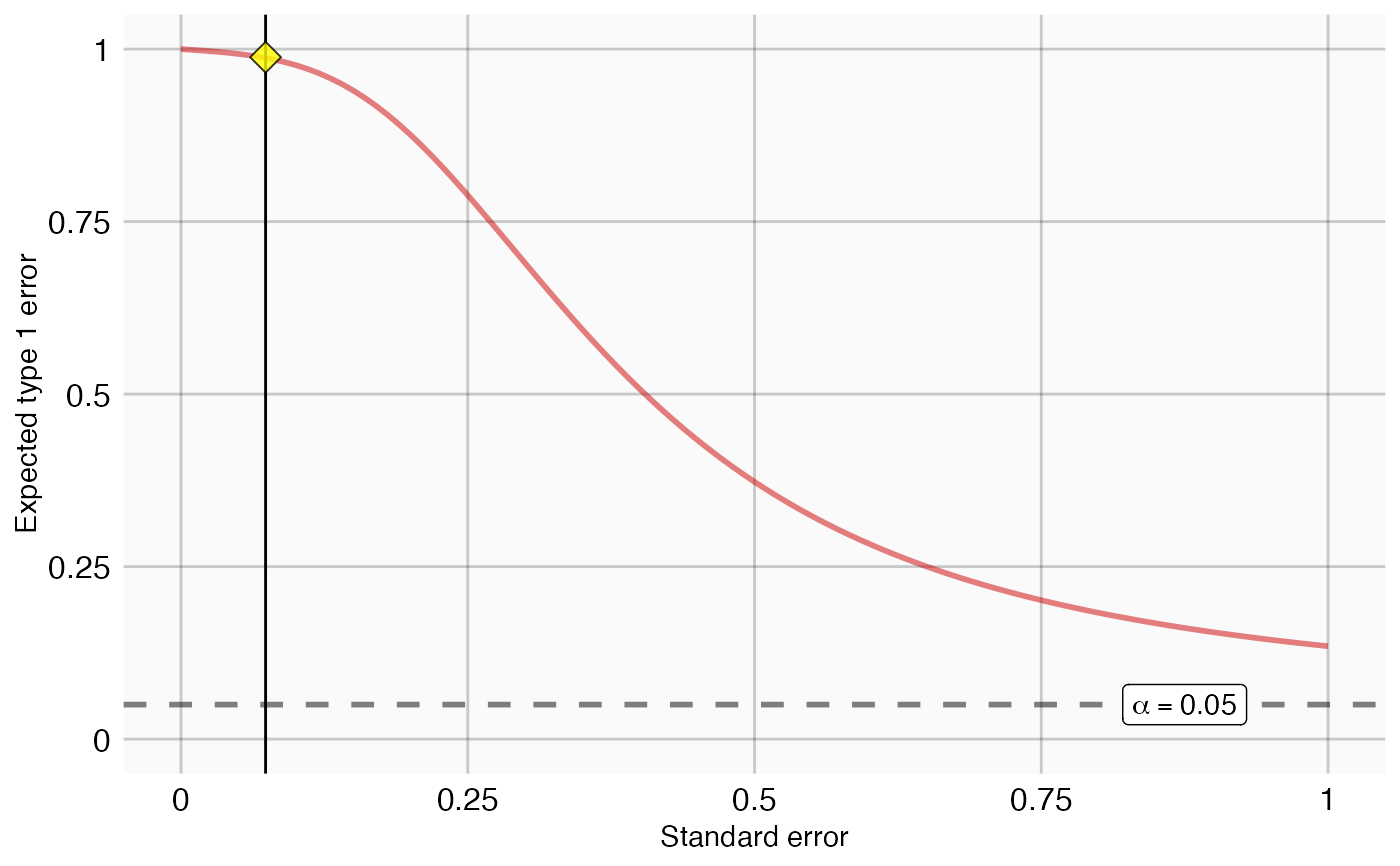Plot the expected type 1 error as a function of standard error
Source:R/Plots.R
plotExpectedType1Error.RdplotExpectedType1Error creates a plot showing the expected type 1 error as a function of standard error.
plotExpectedType1Error(
logRrNegatives,
seLogRrNegatives,
seLogRrPositives,
alpha = 0.05,
null = NULL,
xLabel = "Relative risk",
title,
showCis = FALSE,
showEffectSizes = FALSE,
fileName = NULL
)Arguments
- logRrNegatives
A numeric vector of effect estimates of the negative controls on the log scale.
- seLogRrNegatives
The standard error of the log of the effect estimates of the negative controls.
- seLogRrPositives
The standard error of the log of the effect estimates of the positive controls.
- alpha
The alpha (nominal type 1 error) to be used.
- null
An object representing the fitted null distribution as created by the
fitNullfunction. If not provided, a null will be fitted before plotting.- xLabel
If showing effect sizes, what label should be used for the effect size axis?
- title
Optional: the main title for the plot
- showCis
Show 95 percent credible intervals for the expected type 1 error.
- showEffectSizes
Show the expected effect sizes alongside the expected type 1 error?
- fileName
Name of the file where the plot should be saved, for example 'plot.png'. See the function
ggsavein the ggplot2 package for supported file formats.
Value
A Ggplot object. Use the ggsave function to save to file.
Details
Creates a plot with the standard error on the x-axis and the expected type 1 error on the y-axis. The red line indicates the expected type 1 error given the estimated empirical null distribution if no calibration is performed. The dashed line indicated the nominal expected type 1 error rate, assuming the theoretical null distribution.
If standard errors are provided for non-negative estimates these will be plotted on the red line as yellow diamonds.
Examples
data(sccs)
negatives <- sccs[sccs$groundTruth == 0, ]
positive <- sccs[sccs$groundTruth == 1, ]
plotExpectedType1Error(negatives$logRr, negatives$seLogRr, positive$seLogRr)
